All products featured are independently chosen by us. However, SoundGuys may receive a commission on orders placed through its retail links. See our ethics statement.
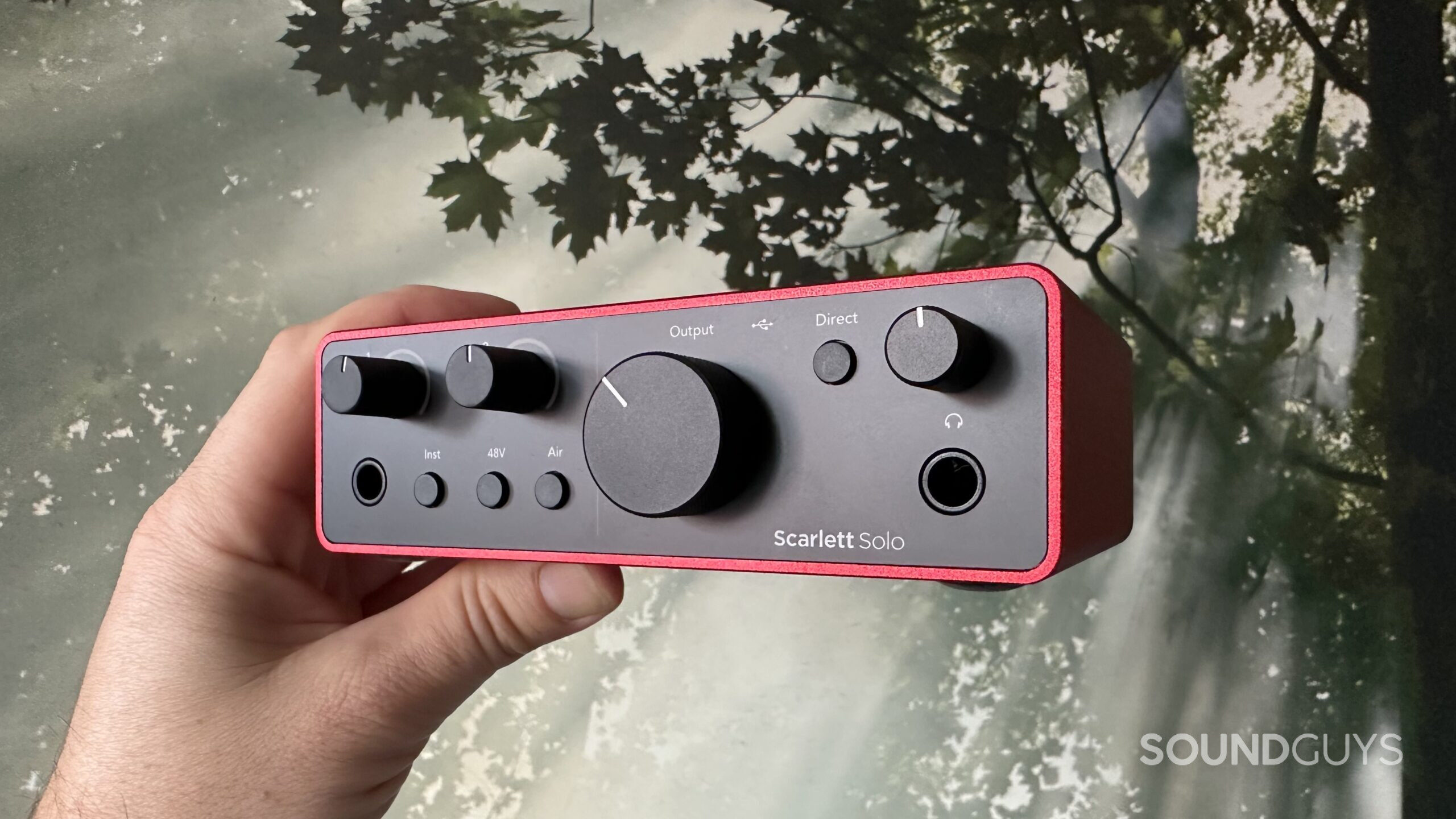

Focusrite Scarlett Solo (4th Gen) review
Published onOctober 24, 2024


Scarlett Solo 4th Gen
Whether you’re a novice singer-songwriter ready to record your first demo or a seasoned artist on tour needing to capture a fresh idea in your hotel room on a day off, a simple and easy-to-use audio interface is worth its weight in creative gold. Of course, keeping things simple shouldn’t come at the cost of sound quality. In this Focusrite Scarlett Solo (4th Gen) review, I fire up my DAW and hit record to discover if the smallest of these little red Focusrite boxes is still the ideal choice for beginner songwriters and professionals on the go.
Editor’s note: this is the first version of the article. Updates will follow as the market changes.
What I like about the Focusrite Scarlett Solo (4th Gen)
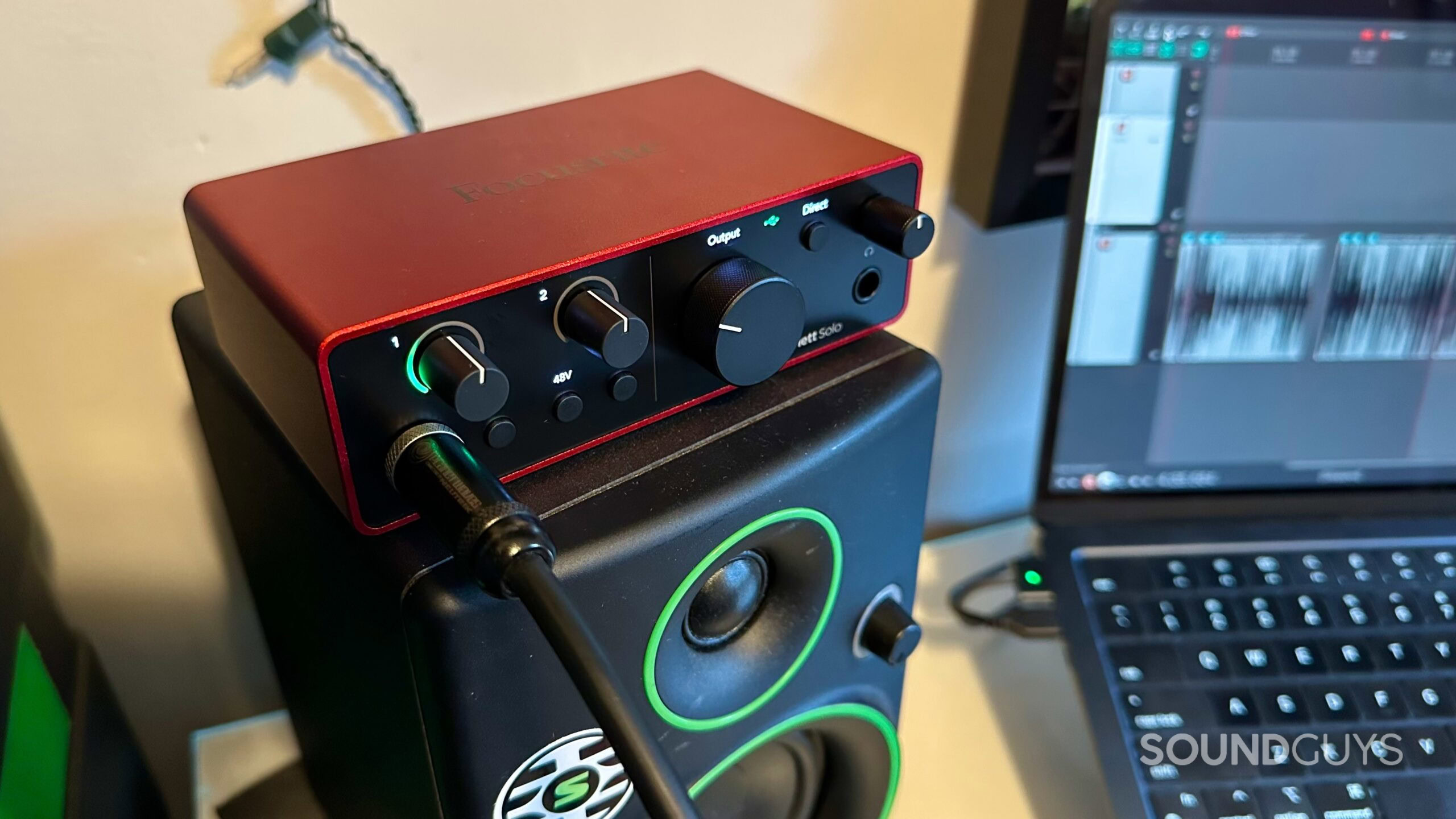
Housed in its durable, unmistakable aluminum red chassis, the Focusrite Scarlett Solo (4th Gen) audio interface offers an easy-to-use, plug-in-and-play solution for beginner home recording artists, podcasters, or anyone who doesn’t require more than two inputs to get their musical ideas down. It’s so small that you can easily travel with it if you’re on the road regularly. After all, you never know when inspiration may strike.
The unit connects to your computer (or USB-C iPad) via USB-C, offering a balanced XLR and a Hi-Z 1/4″ input. If you’re using a condenser microphone to record vocals or an acoustic guitar, use the XLR input and engage the 48V of phantom power. Alternatively, plug into the high-headroom Hi-Z 1/4″ instrument input to record electric guitars while using an amp simulator, which is right up my alley. The input level lights that encircle each input knob are bright and easy to read, so you’ll know visually if your signal is clipping or if you maybe need just a bit more gain.
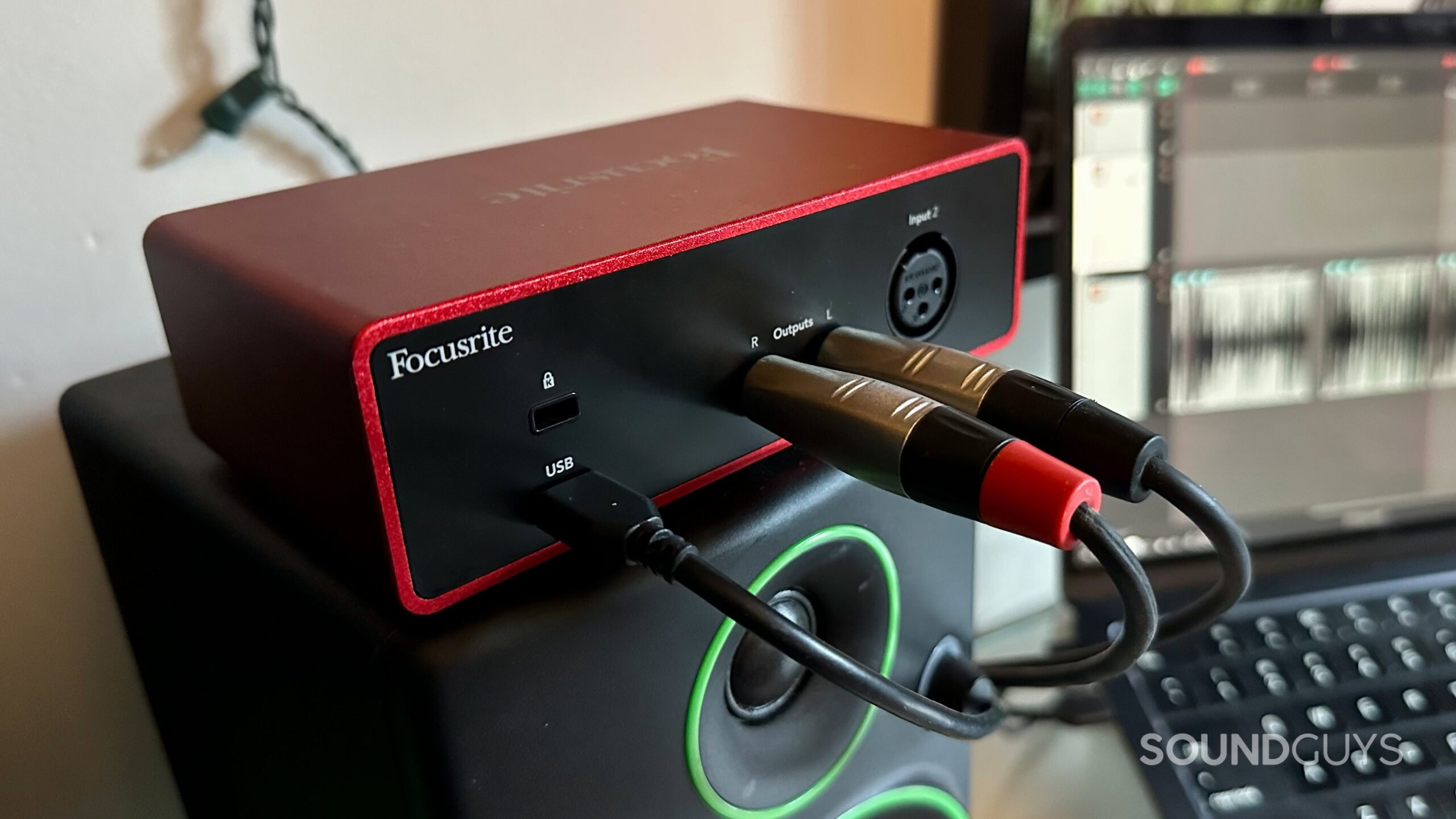
The front of the unit clearly labels the gain, monitor output, and headphone output controls. The back contains the XLR port, USB-C port, and two 1/4″ output jacks for connecting to your reference monitors. As with previous generations, you can use and control both the monitor and headphone out simultaneously, allowing you to record and mix however you prefer.
For example, I use headphones with a click track running while recording acoustic guitars, but then I can quickly listen back to the recording over my monitors for a second reference if I wish. When recording electric guitars, I prefer not to use headphones and simply crank up my reference monitors via the output knob for more of a “live” feeling since no microphone is involved. It’s always nice to have options.
Below are some demos I recorded with the Focusrite Scarlett Solo (4th Gen) and my MacBook Air in my small home office, which is an office or bedroom like any other. It doesn’t have any acoustic sound treatment. Reaper is my DAW of choice.
Focusrite Scarlett Solo (4th Gen) Acoustic Guitar Demo:
I stuck with affordable gear to record this particular demo. I used the Focusrite CM25 MKIII condenser microphone (the one available in the “Focusrite Studio Bundle”) connected to the XLR input of the Scarlett Solo (4th Gen) to record my intermediate-level, smaller-sized acoustic guitar, a Yamaha FS830. There are three tracks in total. Both the left and right rhythms have no additional signal processing, but the lead guitar down the middle has some added reverb from the DAW.
Focusrite Scarlett Solo (4th Gen) Electric Guitar Demo:
Taking advantage of its Hi-Z input, I couldn’t resist a quick electric guitar demo. It doesn’t require a DI to get a usable signal either; you’re provided with plenty of input gain with just a 1/4″ guitar cable, so you can really let the interface do the work. I chose to use my favorite amp simulator to record this track, the Neural Archetype Gojira X and it responded well to my playing in real-time without any latency. The clean rhythm tracks are courtesy of a Danelectro ’57 guitar with single coil pickups and no additional processing, but the lead is through my PRS CE 24, and I added some delay for texture.
Focusrite Scarlett Solo (4th Gen) “Singing” without Air Mode:
I’m the first to admit I’m no singer, but the Scarlett Solo features “Air Mode,” which Focusrite claims adds “presence, depth, and clarity” to your vocal performance. Below is a quick take without Air mode engaged. I’m using a Shure MV7+ dynamic microphone connected to the Scarlett solo via XLR for this track.
“Singing” with Air Mode Engaged:
It’s subtle, but engaging Air Mode does add some presence to my voice. Depending on your choice of microphone, some users will most likely prefer to leave this setting on all the time. Since the Shure MV7+ is a dynamic microphone and not as sensitive as a phantom-powered condenser microphone, this is an excellent example of a time to take advantage of this feature.
Podcast Example:
Lastly, just my regular old speaking voice. Again, I’m using the Shure MV7+ connected over XLR with Air Mode engaged. Sounds great!
Overall, I’m quite happy with the quality of these recordings, especially considering I used basic, affordable microphones, amp simulators, and a $400 acoustic guitar. Aspiring bedroom musicians, producers, and podcasters will appreciate the effortless approach of connecting the Scarlett Solo (4th Gen) to their computer and achieving decent recordings of their voices or instruments thanks to the quality mic preamp.
What I don’t like about the Focusrite Scarlett Solo (4th Gen)
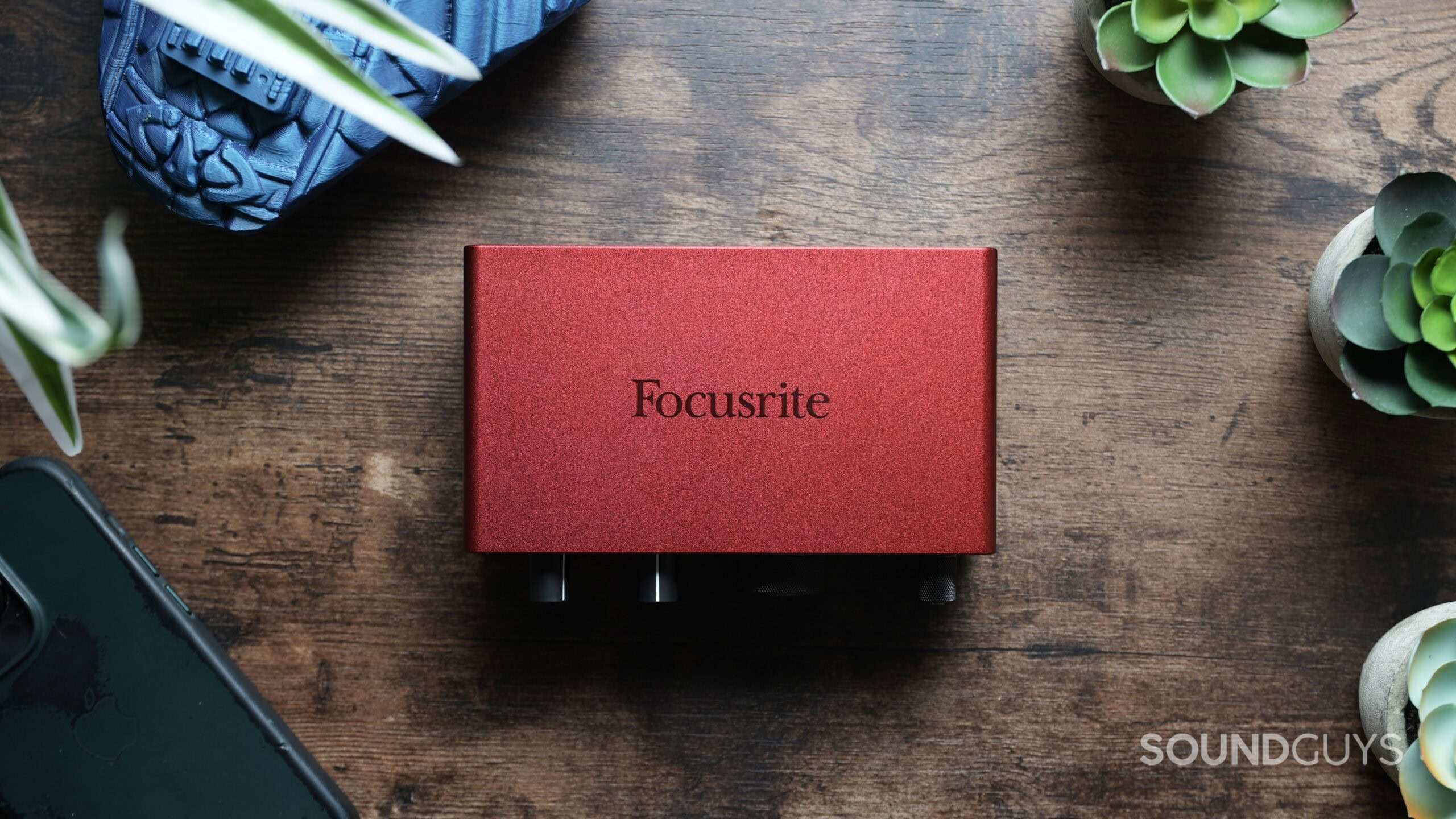
As far as simple, easy-to-use basic recording interfaces are concerned, there isn’t much to complain about regarding the Focusrite Scarlett Solo (4th Gen). That said, there are a few handy features it doesn’t offer that the more expensive Scarlett units like the 2i2 and 4i4 do.
One is multiple inputs of the same connection, which is handy if you want to record a keyboard in stereo, for example. The 2i2 and 4i4 also offer “Auto Gain” mode to help you achieve the ideal gain settings and a “Clip Safe” mode, which again automatically adjusts your input levels to prevent clipping while recording.
Should you buy the Focusrite Scarlett Solo (4th Gen)?
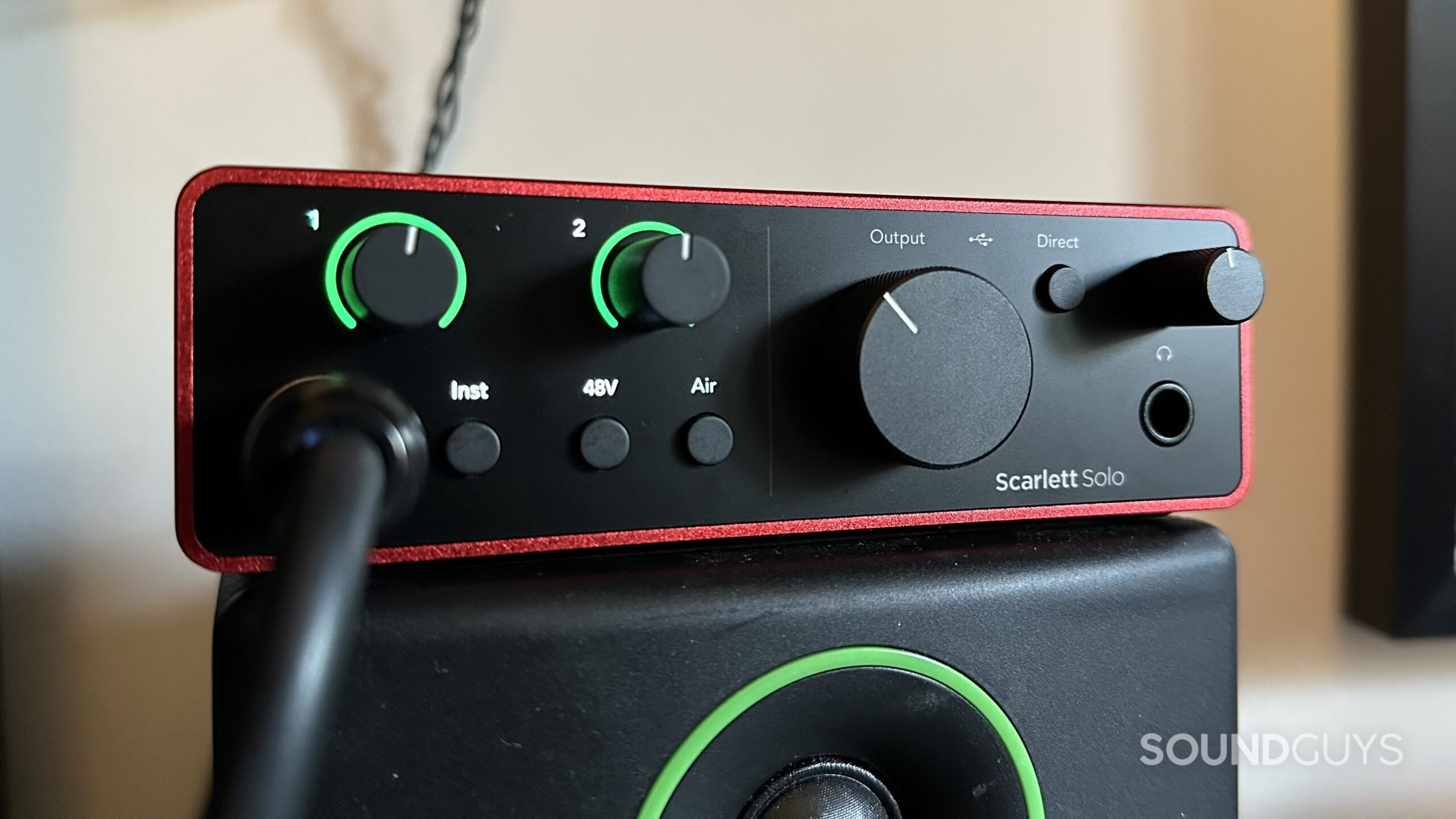
The Focusrite Scarlett Solo (4th Gen) is a safe buy all day. It’s compact and affordable, has excellent mic preamps to produce quality recordings, and is a breeze to connect and work with. You’ll be up and running within minutes, recording into your favorite DAW and keeping those creative juices flowing. If you need more inputs to record multiple instruments simultaneously, consider the larger, more expensive Scarlett 2i2 or 4i4 instead.

Frequently Asked Questions:
Yes, the Focusrite Scarlett Solo (4th Gen) offers 48v of phantom power with the simple push of a button.
Yes, the Focusrite Scarlett Solo (4th Gen) will work with GarageBand without issue.
Sort of. The Focusrite Scarlett Solo (4th Gen) is an audio interface that features a built-in, high-detail, ultra-low-noise preamp.
Yes, the Focusrite Scarlett Solo (4th Gen) is both a Digital to analog converter (DAC) and Analog to digital converter (ADC).
Yes, the Focusrite Scarlett Solo (4th Gen) offers stereo playback of your recordings.
Yes, you can use a subpac with the Scarlett Solo (4th Gen) by connecting it via the headphone output jack.